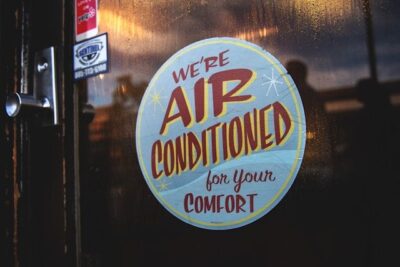Commercial energy costs are on the rise. With commercial businesses known to experience faster growth in electricity consumption compared to the overall average, predicted costs are expected to reach an all-time high in 2025.
Commercial Energy Costs are on the Rise
In the US, commercial buildings with the highest energy costs include hospitals, hotels, restaurants, retailers, and large office blocks that house hundreds of employees, contributing to the country’s use of approximately 815 million metric tons of oil per year.
As energy prices rise across the country, public-facing services will be hit the hardest. However, as demand for commercial property development continues to rise, developers are introducing innovative measures to reduce energy costs.
With this in mind, let’s take a closer look at the commercial development sector as we examine smart HVAC design as a potential solution to the global energy crisis.
Could Smart HVAC Design be the Solution?
Smart HVAC design is set to be a key solution for US commercial buildings struggling with high energy costs.
Operating with advanced controls and sensors, smart HVAC technology aims to optimize heating, cooling and ventilation in response to real-time conditions.
In the US, space heating and cooling alone account for a staggering 42% of commercial building energy use, according to Nature Energy.
Smart HVAC would aim to cut these costs in half by adjusting temperatures inside shops, hospitals, and office buildings in accordance with the weather. This flexibility reduces energy usage and lowers carbon emissions as a result.
Beyond cost savings, experts suggest that smart HVAC systems can also enhance comfort for those visiting and working in commercial buildings, while contributing to the all-important net-zero goal, making them a highly attractive investment for both new builds and retrofits.
Smart HVAC’s Most Attractive Features
Smart HVAC systems are equipped with several features designed to cut energy costs for commercial businesses.
From advanced IoT integration to remote and automated control, smart HVAC is designed to streamline space heating and cooling for maximum efficiency and comfort.
Here are just a few of the key features of Smart HVAC that make the upgrade so desirable for developers in 2025:
- AI-Powered Temperature Control: Smart HVAC systems are powered by AI. With the ability to learn from historical data, an upgraded HVAC system can predict energy needs and automate heating and cooling temperatures to minimise energy waste.
- Remote Control: HVAC technology no longer requires on-site management. Smart HVAC systems come with remote control and automated control, allowing building managers to operate the system remotely via integrated platforms and even mobile apps. This is the key to reducing energy costs when commercial buildings are unoccupied or at low capacity.
- Smart Sensors: Smart HVAC systems are equipped with advanced sensors that continuously monitor both indoor and outdoor temperatures. These sensors are powered by clever IoT devices that allow them to communicate seamlessly with the central control system.
- BMS Integration: Did you know that smart HVAC systems can also be integrated with pre-existing Building Management Systems (BMS)? This ensures that HVAC solutions, lighting, and security can all be managed in one centralized location.
Should Commercial Builders Invest in 2025?
There are plenty of reasons to invest in smart HVAC solutions as a commercial builder in 2025.
If you’re still unsure, here are some of the significant benefits seen by commercial businesses that have already switched:
An Increase in Energy Efficiency
Smart HVAC systems continue to optimize energy efficiency in commercial buildings. In fact, the most recent statistics suggest that updated HVAC systems can now reduce energy usage by a whopping 20-40% in just the first month.
Commercial developers who invest in HVAC service software also have the ability to control costs and further enhance their energy efficiency. With real‑time visibility across HVAC assets, commercial contractors can ensure timely filter replacements, duct cleaning, and system tuning, avoiding performance drop-offs that increase energy use.
Significant Cost Savings
This benefit goes without saying. If you reduce your energy consumption, you reduce your energy costs.
Lower energy consumption is a promise when it comes to installing a smart HVAC system. So if this is a top priority for commercial developers, installation is a no-brainer.
For example, studies show that some forms of smart HVAC can currently save US businesses up to 32% in cost savings per year.
Carbon Footprint Reduction
The US is working towards a nationwide net-zero by 2050. While smart HVAC isn’t a cure-all, it can reduce the carbon footprint of the commercial business industry.
For commercial developers, smart HVAC may soon become a requirement for all new projects, particularly since it has become essential for obtaining green building certifications, such as LEED.
Wrapping Up
Smart HVAC solutions continue to pave the way for a greener future for the commercial business sector.
With the ability to reduce energy consumption and optimize working conditions for commercial employees, smart HVAC is a no-brainer for budding business developments in the US.
View the original article and our Inspiration here


Leave a Reply